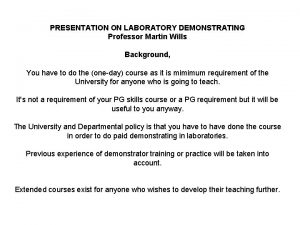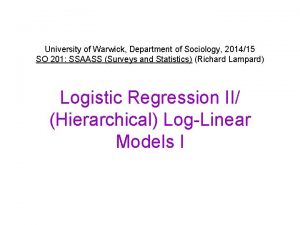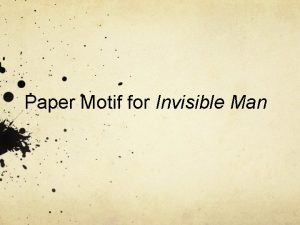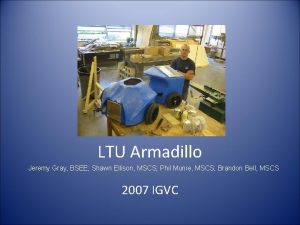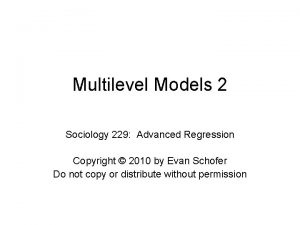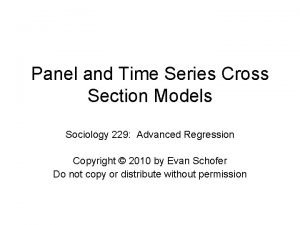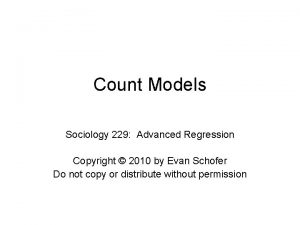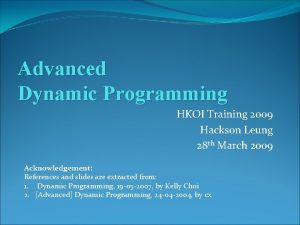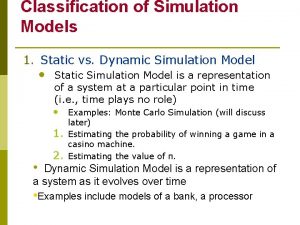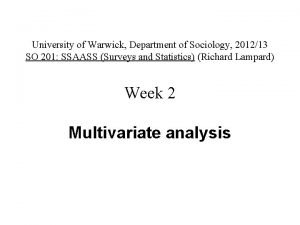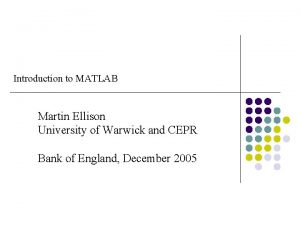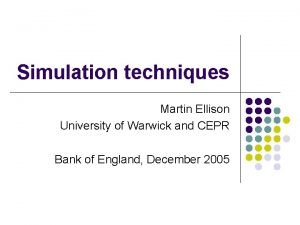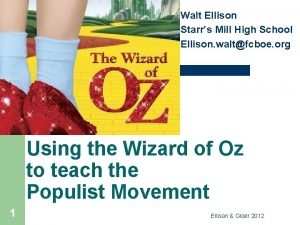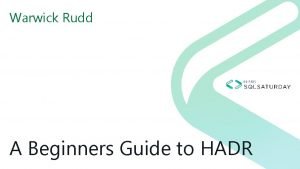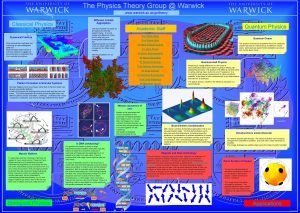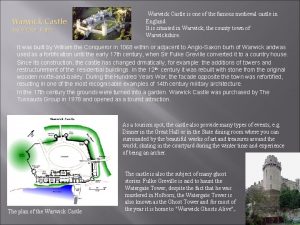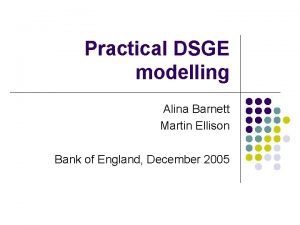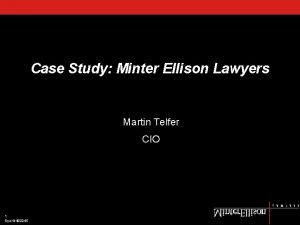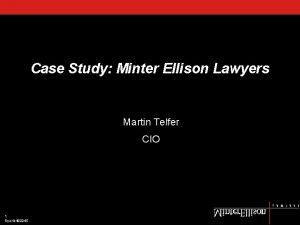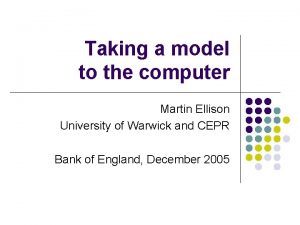Advanced dynamic models Martin Ellison University of Warwick














- Slides: 14

Advanced dynamic models Martin Ellison University of Warwick and CEPR Bank of England, December 2005

More complex models Frisch-Slutsky paradigm Impulses Propagation Fluctuations

Impulses Can add extra shocks to the model Shocks may be correlated

Propagation Add lags to match dynamics of data (Del Negro-Schorfeide, Smets-Wouters) Taylor rule

Solution of complex models Blanchard-Kahn technique relies on invertibility of A 0 in state-space form.

QZ decomposition For models where A 0 is not invertible QZ decomposition: s. t. upper triangular

Recursive equations stable unstable Recursive structure means unstable equation can be solved first

Solution strategy Solve unstable transformed equation Substitute into stable transformed equation Translate back into original problem

Simulation possibilities Stylised facts Impulse response functions Forecast error variance decomposition

Optimised Taylor rule What are best values for parameters in Taylor rule ? Introduce an (ad hoc) objective function for policy

Brute force approach Try all possible combinations of Taylor rule parameters Check whether Blanchard-Kahn conditions are satisfied for each combination For each combination satisfying B-K condition, simulate and calculate variances

Brute force method Calculate simulated loss for each combination Best (optimal) coefficients are those satisfying B-K conditions and leading to smallest simulated loss

Grid search For each point check B-K conditions 2 1 0 1 2 Find lowest loss amongst points satisfying B-K condition

Next steps Ex 14: Analysis of model with 3 shocks Ex 15: Analysis of model with lags Ex 16: Optimisation of Taylor rule coefficients
 Martin wills warwick
Martin wills warwick Martin wills warwick
Martin wills warwick Warwick university sociology
Warwick university sociology Invisible man chapter 14
Invisible man chapter 14 Ellison g gray
Ellison g gray Advanced regression models
Advanced regression models Panel data
Panel data Advanced regression models
Advanced regression models Dynamic programming bottom up
Dynamic programming bottom up Modal and semi modal verbs
Modal and semi modal verbs Classification of models in simulation
Classification of models in simulation Dynamic dynamic - bloom
Dynamic dynamic - bloom University governance models
University governance models Warwick sociology modules
Warwick sociology modules Swatt warwick hospital
Swatt warwick hospital

